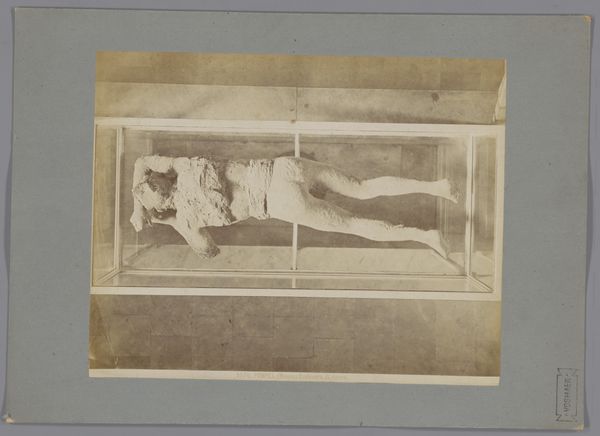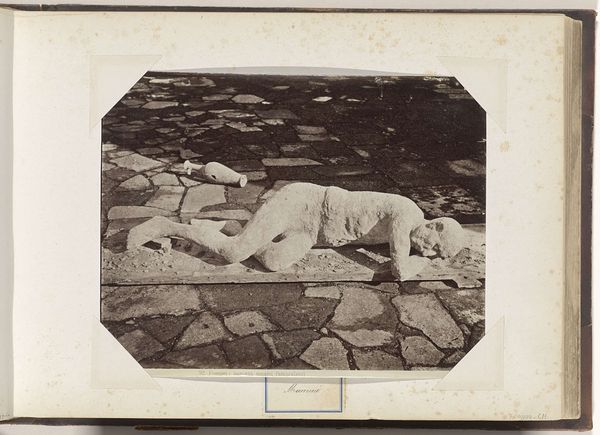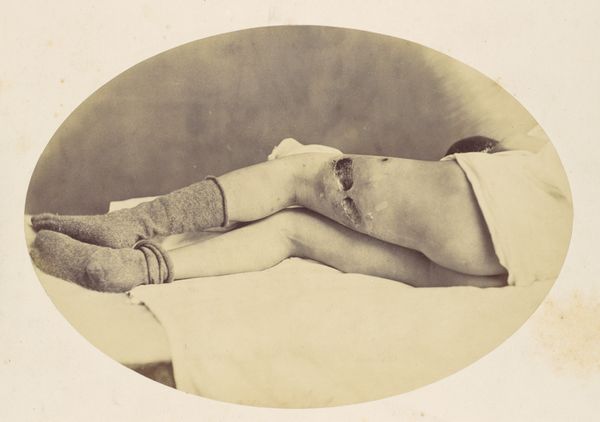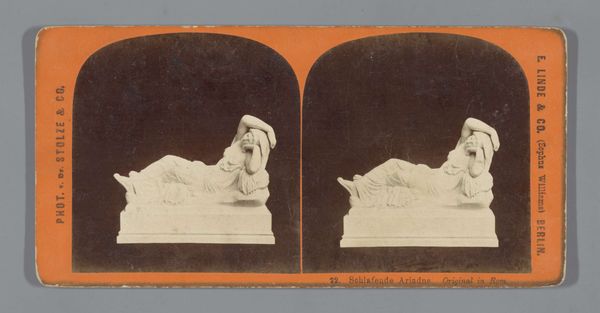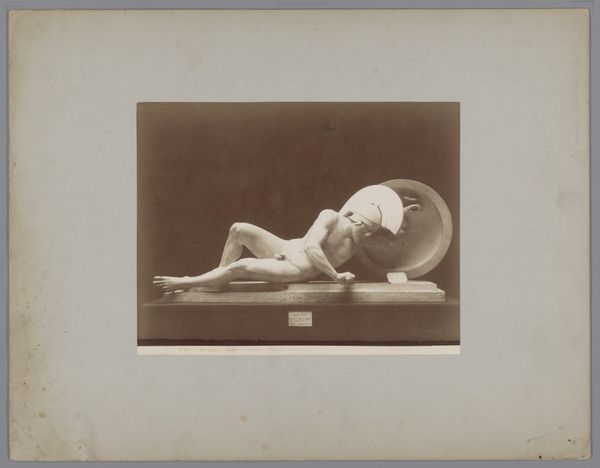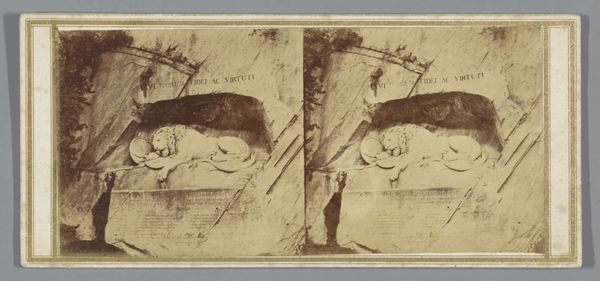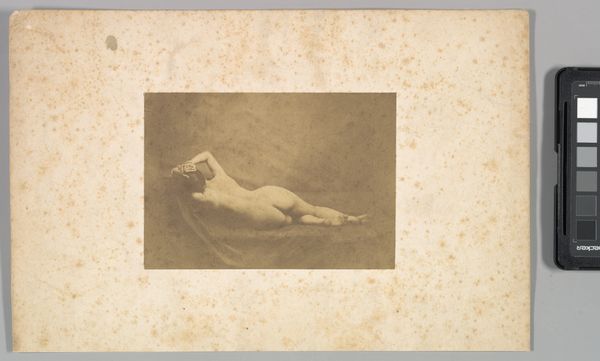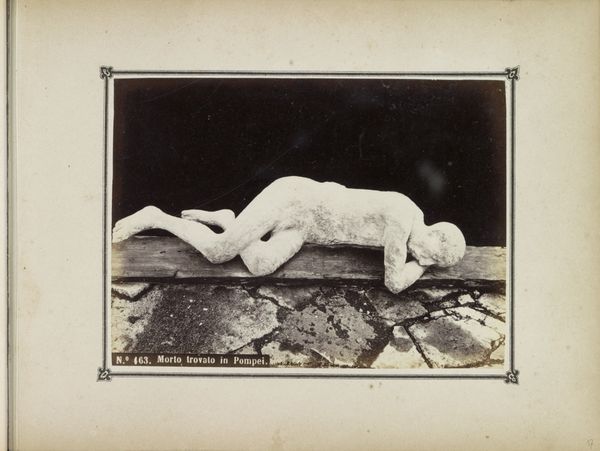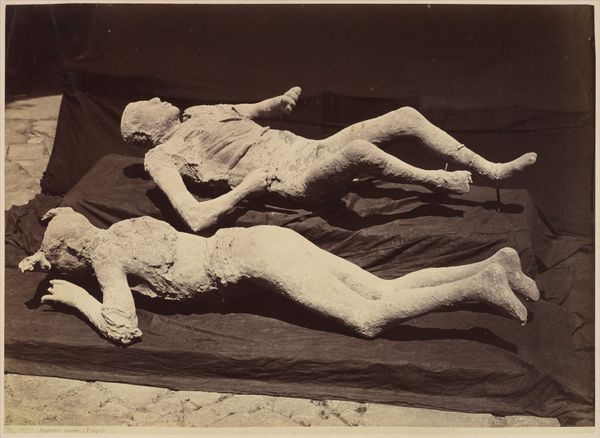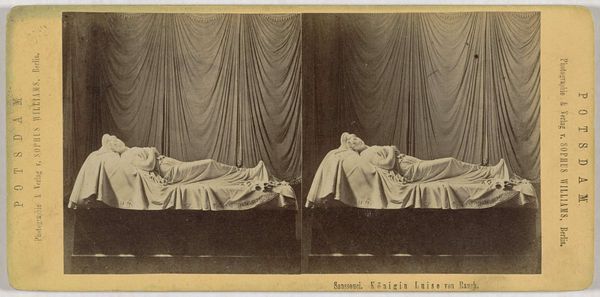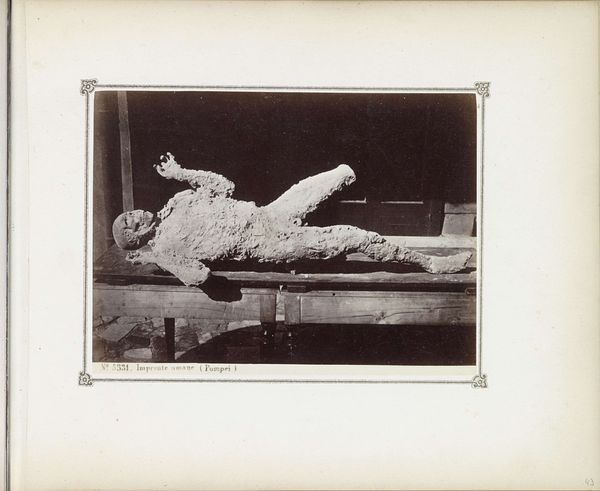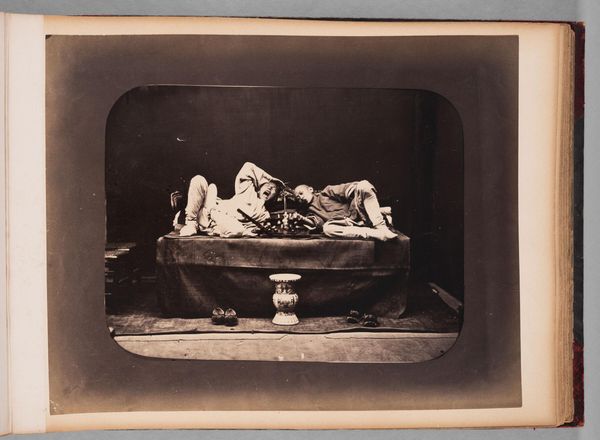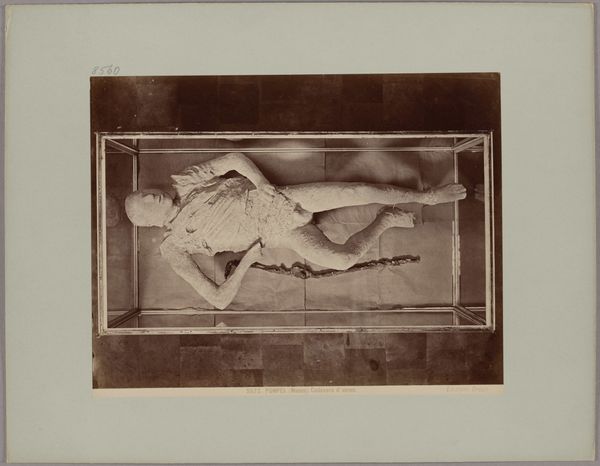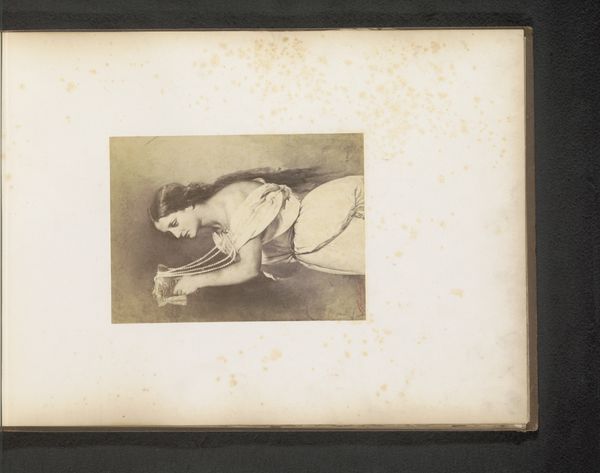
photography
#
still-life-photography
#
photography
#
ancient-mediterranean
#
realism
Dimensions: height 85 mm, width 178 mm
Copyright: Rijks Museum: Open Domain
Editor: This is a photographic still life by Giorgio Sommer, created sometime between 1860 and 1880. It's titled "Resten van een menselijk lichaam gevonden in Pompeï," or "Remains of a Human Body Found in Pompeii." It’s incredibly…stark. The monochrome tones and the posed presentation of the casts are deeply unsettling. What symbols or stories do you think it conveys? Curator: This image strikes me as a profound confrontation with mortality, mediated through the lens of archaeology and early photography. Consider the symbolism inherent in the ruins of Pompeii itself – a civilization frozen in time, a moment of catastrophe eternally preserved. And then, the body casts. Editor: Right, these are not the actual bodies, but casts. Curator: Exactly. These casts serve as effigies, hollow shells that capture the final moments of life. Sommer’s work reflects a 19th-century fascination with antiquity. But it also points to a deeper human need: to confront death, to remember, and to find meaning in loss. Does the photograph perhaps operate as a relic itself? Editor: A relic, yes! Because it’s like a reproduction of a reproduction. I am curious about the intent behind what almost seems to border on staging… Curator: Think about it in terms of a *memento mori*, a reminder of death. These images served to educate but also to create a tangible link to the past for those who could not visit Pompeii themselves. What feeling does that inspire? Editor: I guess it is like owning a fragment of a terrible moment in the history of humanity, a physical manifestation of a disaster…I can see that would hold tremendous cultural weight for the time. Curator: Indeed. And today, it encourages us to consider how we, too, leave traces. Photography becomes a layer in a chain of representation and memory. What lasting impressions have you gathered from examining this artwork? Editor: I realize now that the photograph isn’t just documenting; it's participating in the construction of a narrative about history, loss, and how we choose to remember. Curator: Precisely! The layers of symbolism enrich our comprehension.
Comments
No comments
Be the first to comment and join the conversation on the ultimate creative platform.
